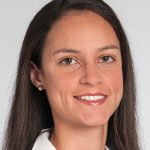
Otolaryngologists Discuss Keys to Treating Top Athletes
Keys to caring for pro athletes include restraint, being available when they need care and using professionalism as your guide.

Keys to caring for pro athletes include restraint, being available when they need care and using professionalism as your guide.

High-tech tools such as virtual surgical planning (VSP) and 3D-printed implants are helping otolaryngologists treat patients with complex facial trauma with more accuracy for improved outcomes.

Bulbous nasal tips can bring about not just aesthetic problems, but also functional issues.

Sometimes a soft intervention such as a conversation with the colleague can help, but sometimes more decisive action is needed.

Despite dips in the number performed, sinus surgery still plays an essential role in the treatment of invasive fungal rhinosinusitis.
Months of residency interviews, letter writing, and phone calls come down to one day to find out who we will spend the next five years training.

Valeria Silva Merea, MD, a laryngologist specializing in head and neck surgery at Memorial Sloan Kettering Cancer Center, discusses how sports taught her important skills, including discipline and time management.

Medical students described a negative academic climate to which they said USMLE Step 1 was contributing, a climate increasingly addled with competition over matching into subspecialties.
Nimodipine significantly increased the odds of vocal fold motion and facial recovery after injury.

A common question by patients with newly diagnosed vestibular schwannomas (VS) is, Which treatment will best preserve my hearing?”
A look at how effective systemic tranexamic acid is compared to a control in blood loss, operative time, and surgical field and incidence of postoperative emesis and thromboembolism in endoscopic sinus surgery (ESS).
Upper airway stimulation (UAS) is successful in treating obstructive sleep apnea (OSA) showing improved outcomes, length of stay, and readmission compared to transoral robotic surgery (TORS).
Tissue eosinophil aggregates appear to be the largest driving factor for increased prednisone requirements after sinus surgery to control mucosal disease than the mere presence of eosinophils.